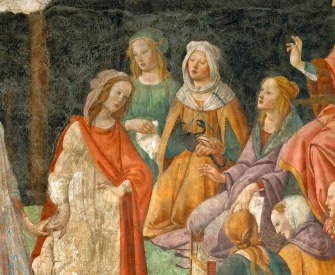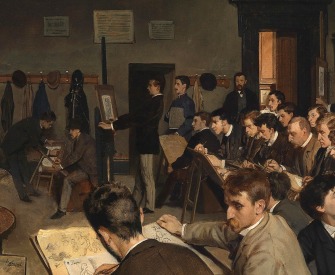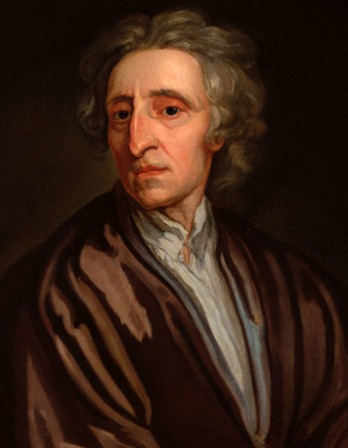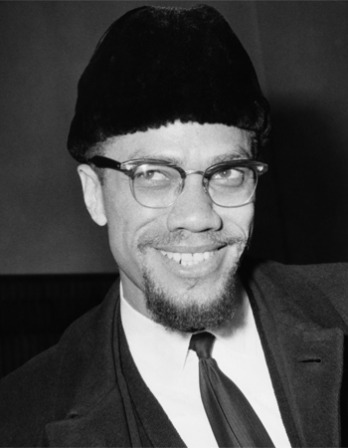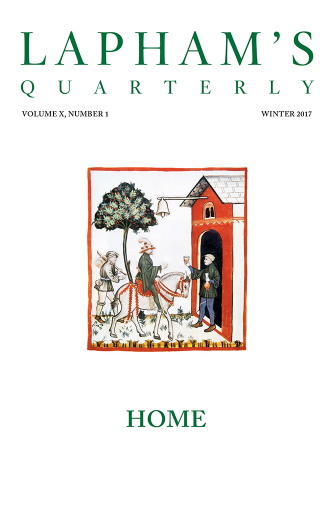The only function of a school is to make self-education easier.
—Isaac Asimov, 1974A Means to an End
The intertwined history of education, history, and patriotism in the United States.
By Michael D. Hattem

Scholarly Pursuits, China, eighteenth century. Minneapolis Institute of Art, gift of Ruth and Bruce Dayton.
In 1788, as the young republic was trying to establish itself under the new Constitution, Noah Webster wrote, “Americans, unshackle your minds, and act like independent beings…you have an empire to raise…and a national character to establish.” “To effect these great objects,” he continued, “it is necessary to frame a liberal plan of policy and build it on a broad system of education.” After the War of Independence ended, Webster published several best-selling readers and grammatical texts “calculated particularly for American schools.” These books incorporated many now-familiar stories from the United States’ colonial and revolutionary past, chosen for their “noble, just, and independent sentiments of liberty and patriotism” with the hope that education might “transfuse them into the breasts of the rising generation.” From the very beginnings of the United States, education, history, and patriotism have been fundamentally intertwined.
Education in the United States underwent its first great expansion in the decades between the Revolution and the Civil War. The revolutionary generation had few models of public education. Until then, education had been limited almost entirely to elite white males, who were instructed in Latin and Greek (required for admission to college) at young ages in grammar schools. The colonies’ few colleges were primarily seminaries aimed at preparing young men for the ministry. Only in New England, which enjoyed especially high literacy rates, did anything resembling public education exist, in the long-standing tradition of town schools, the one- or two-room schoolhouses serving rural areas. These schools offered the classical form of education predominant in the colonies, focusing on grammar, logic, and rhetoric. Though history was not yet a distinct subject taught in schools, it was nevertheless seen as important. Young men were expected to read history on their own time as a form of instruction for serving in political office and civic life. The 1728 book A New Method of Studying History, Geography, and Chronology, Richard Rawlinson’s translation of Nicolas Lenglet du Fresnoy’s 1713 French work, instructed:
Everyone knowing the state of life he is placed in ought to regulate himself in the study of History…We know for certain that it would be very dangerous for a private person, in applying himself to the reading of Historians, to turn his head to political reflexions, and those means made use of to make an appearance, and advance himself in the courts of great men.
In other words, knowledge of history was understood to be powerful enough that it could allow an ordinary person to overcome the period’s rigid social hierarchy and pass himself off as an elite gentleman.
In 1779, before the War of Independence was over, Thomas Jefferson proposed a Bill for the More General Diffusion of Knowledge, which would fund three years of schooling for all free children, both boys and girls, in Virginia. Nationalist boosters like Webster, who called an educated citizenry “the sine qua non of the existence of the American republics,” also called for the creation of a system of public education. Though these efforts largely failed, states did lend their support to the establishment of private academies that again primarily educated elites. State support for these schools, such as Phillips Academy Andover, Phillips Exeter Academy, and Deerfield Academy, included the granting of charters and incorporation. In Virginia, the Carolinas, and Georgia, sixty academies were established between the end of the American Revolution and 1800, and almost all of them received such support from their respective states.
Female education took on its own specific importance because women were expected to provide the civic education at home that would produce virtuous, patriotic republican citizens. As Benjamin Rush wrote in 1787, “Ladies should be qualified to a certain degree, by a peculiar and suitable education, to concur in instructing their sons in the principles of liberty and government.” In the following decades, women’s academies opened to provide the education necessary to achieve this ideal of “republican motherhood.” Women’s new roles as civic educators proved to be short-lived, however, as Victorian notions of femininity redefined gender roles in the nineteenth century, leaving most married women confined to the domestic sphere. The elite male academies came under fire for their exclusivity, and the public reaction against these schools helped drive support for state-funded education systems by the middle of the nineteenth century.
Modern conceptions of patriotism and its relationship to education originated in the decades between the 1880s and the 1920s. Facing an unprecedented influx of immigrants from eastern and southern Europe, upper- and middle-class Americans feared that the growing presence of foreigners—particularly those inclined toward socialism—would dilute the appreciation of the ideals of “Americanism” and patriotism among the native-born population. New conservative organizations promoting hereditary patriotism, such as the Sons and Daughters of the American Revolution, were founded across the country. These groups took it upon themselves to educate newcomers on what it meant to be a patriotic American, including holding a reverent view of the country’s past and an appreciation of law and order and the status quo. They formed committees to promote “patriotic citizenship” for immigrants by establishing educational programs in cities and towns across the country, offering lectures and evening classes to introduce immigrants to the nation’s history, laws, and government. These groups’ celebratory approach to the past drew on earlier forms of patriotism, but they applied them in new ways, based on the political and educational circumstances of a new century.
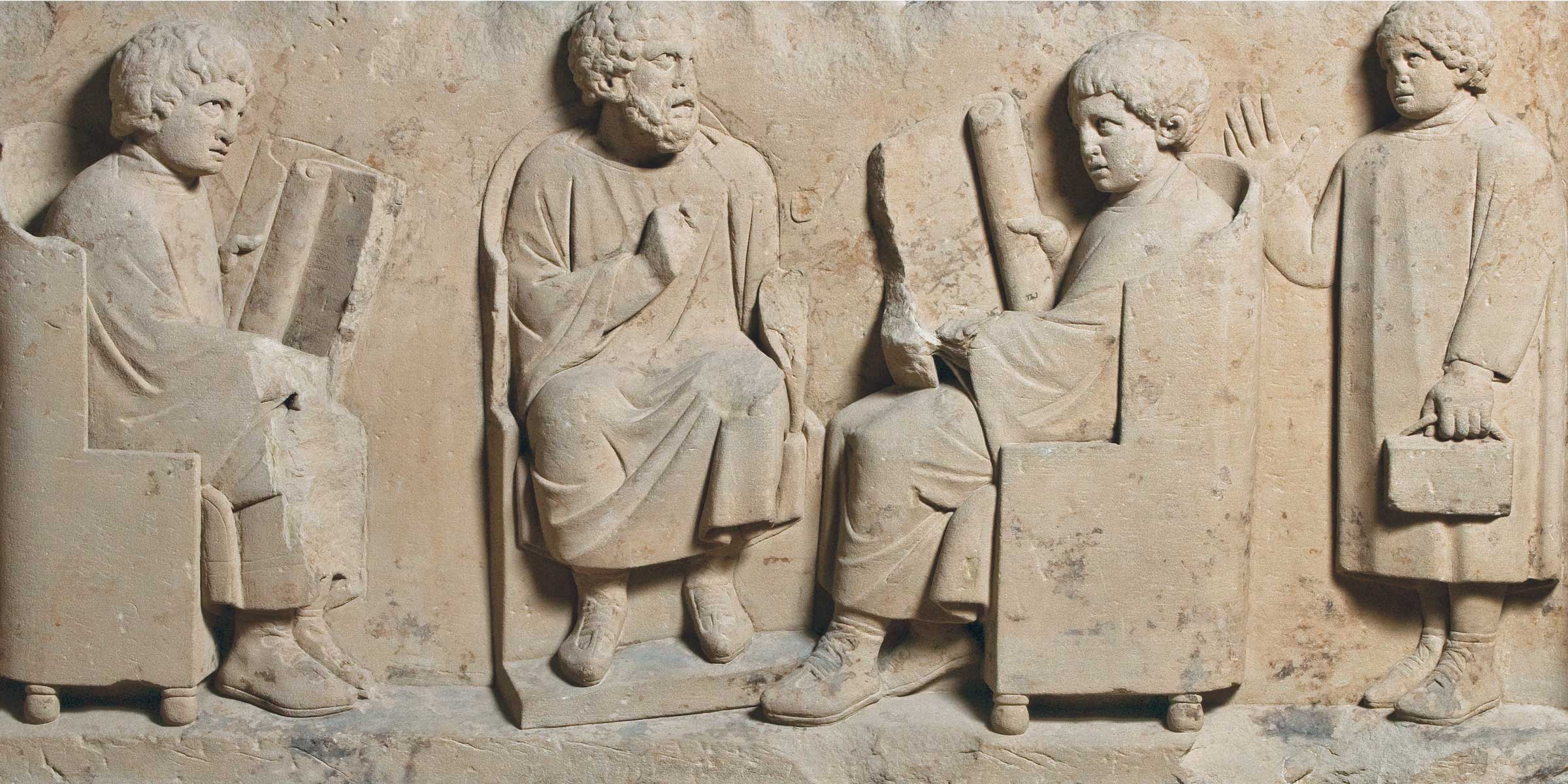
Roman funerary relief with a school scene, Germany, c. 185. bpk Bildagentur / Rheinisches Landesmuseum / Thomas Zühmer / Art Resource, NY.
In the first decades of the twentieth century, ideas about education, history, and patriotism were changing in fundamental ways. All states now required compulsory education; in the nineteenth century, fewer Americans had gone to school and for a shorter period of time. New ideas about education were leading to a more student-centered approach to teaching. Progressive teachers sought to engage students through early forms of what would later be called “inquiry-based learning.” The traditional top-down style of teaching—in which students acted solely as the receivers of knowledge dictated from on high—was ideally suited in many ways to instilling an unquestioning patriotism in students. By contrast, the newer methods were intended to provide training for citizenship by allowing students to develop their critical-thinking skills through interpreting texts and discussing large questions of civic importance. As a result, progressive education directly challenged the older form of patriotic education in both method and content. As education began changing significantly, parents sought to exert a greater influence over what went on in schools. They ran for seats on the growing number of local boards of education and founded parent-teacher associations, which had first formed in the 1890s. With education changing and more Americans participating in the educational system, the stakes of education-related decisions were raised accordingly.
In the final decades of the nineteenth century, the United States’ first doctoral programs in history introduced the German concepts of academic history and the academic historian. Before then, the writing of history had been limited largely to elite males with the personal resources and leisure time to research and write—the same class that had been favored with education before its expansion. By the early twentieth century, a new generation of academic historians had emerged who researched the American past by looking at primary sources. They wrote with a commitment to uncovering the truth, unlike nineteenth-century historians of the United States, whose work was openly nationalistic and triumphal. From this generation came the imperial historians and the progressive historians. The imperial historians were conservative Anglophiles who challenged the good-vs.-evil narrative of America’s founding by studying Britain’s administration of the colonies before the American Revolution. They concluded that the colonists had been treated fairly by Britain and had little cause to declare independence. Meanwhile, the progressive historians focused on the importance of class conflict in American history. Their exemplar, Charles A. Beard, famously argued in 1913 that the founders at the Constitutional Convention voted according to their personal economic interests. Though this view later fell out of favor, his claim shocked many at the time because it reduced the deified founders to crass politicians and treated the Convention as a counterrevolution.
The politics of the early twentieth century also deeply influenced changing ideas about patriotism. By the 1920s, the Republican Party was no longer exclusively Northern, and the Democratic Party no longer had a monopoly on the South. The formerly progressive Republicans became conservative champions of business interests, while the formerly conservative Democratic Party began to include populists and disillusioned progressives fleeing the Republican Party. Conservatives of both parties carried on the nineteenth-century tradition of defining patriotism by celebrating and mythologizing the past, especially the nation’s revolutionary origins. The Constitution was increasingly seen by conservatives as a product of what Warren G. Harding called “the divine inspiration of the founding fathers.” This passive form of patriotism, as historian Ben Railton describes it, placed a specific vision of the past beyond debate and turned it into a test of loyalty for citizens and new immigrants alike. Americans who did not declare their unconditional affection for the so-called founding fathers and acknowledge the unchanging perfection of the Constitution were considered suspect.
Progressives developed a more mutable, Darwinian understanding of society. While campaigning for president in 1912, Woodrow Wilson argued that “a nation is a living thing” and that the Constitution should be treated as a living, evolving document. In other words, progressives acknowledged that changing political and economic circumstances necessitated changes to institutions—and even to the Constitution itself, through amendments. This critical approach to the nation’s history—which saw the Constitution and the law as tools to achieve the revolutionary ideals of liberty and equality enshrined in the Declaration of Independence and later advanced in the Gettysburg Address—produced a more active form of patriotism, defined by a commitment to progress. The dynamic between conservatives’ celebratory patriotism and liberal progressives’ activist criticism helped lay a foundation for the many conflicts over education, history, and patriotism that followed.
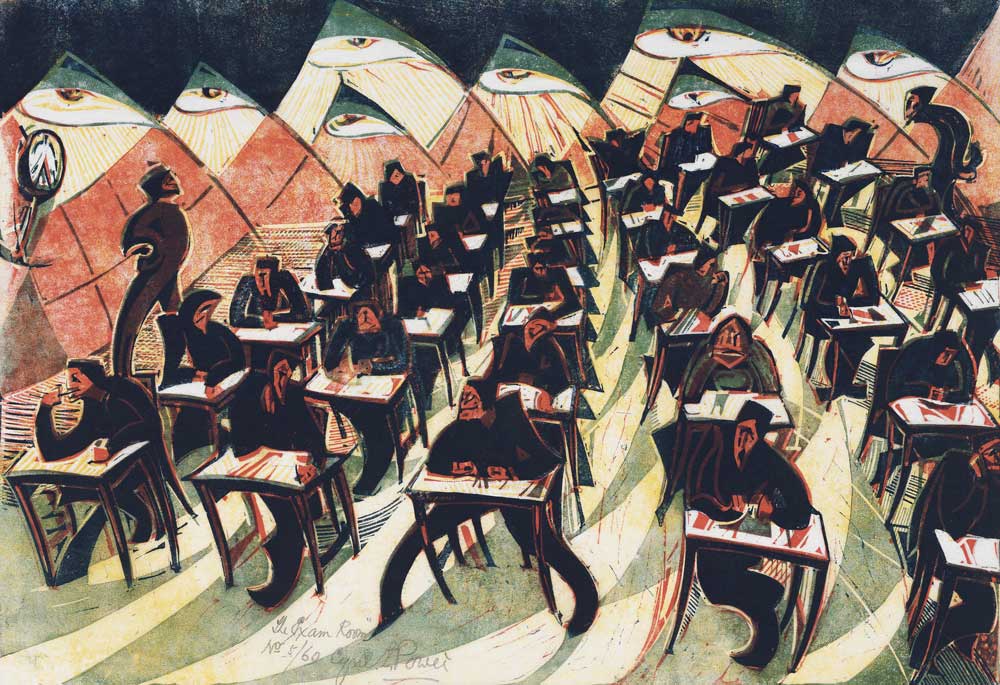
The Exam Room, by Cyril Edward Power, c. 1934. Photo © Christie’s Images / Bridgeman Images.
The first national conflict over textbooks began in New York City in 1920. The United States had strengthened its alliance with Great Britain around the turn of the century, and sedition laws were passed during World War I to keep Americans from publicly disparaging their ally. After the war ended, controversy erupted over the depiction in school materials of Britain and its treatment of the colonies. The work of academic historians had made its way into school textbooks over the previous two decades. Charles Grant Miller, a conservative columnist and the founder of the Patriot League for the Preservation of American History, wrote a series of letters to conservative newspapers in which he raised alarms about the new textbooks being used in New York City schools. Miller condemned the books for promulgating both the imperial historians’ “new and apologetic attitude toward England” and the progressive historians’ more critical views of the founders. Conservative patriotic groups joined him in denouncing these ideas as a “defamation of America.” Drawing on a long-standing proclivity toward conspiracy in American political culture, some conservatives saw these “Anglicized school histories” as part of a “sinister movement” to “bring America once more into the British Empire.” Worried that “the springs of our patriotic inspirations are being poisoned,” he warned that “what is taught to our children determines our nation’s destiny.”
By 1921 the controversy had led the conservative New York City Board of Education to create a commission to investigate pro-British influences on textbooks. The committee’s report, published the following year, included a long list of proposed revisions for ten textbooks taught in the city’s schools. Education, the report stated, was a “means to ends; such as love for law and order; respect for constituted authority; appreciation of the institutions of the country and its ideals.” News of the controversy in New York sparked complaints about unpatriotic textbooks throughout the country. Before long, committees in several cities and towns opened their own investigations into textbooks, urged on by local politicians, some of which went on to pass laws restricting the teaching of “unpatriotic” history. In 1923 the Wisconsin state legislature passed a law that began:
No history or other textbook shall be adopted for use or be in any district school, city school, vocational school, or high school which falsifies the facts regarding the War of Independence or the War of 1812 or which defames our nation’s founders or misrepresents the ideals and cause for which they struggled and sacrificed, or which contains propaganda favorable to any foreign government.
In The Atlantic Monthly in 1923, the historian James Truslow Adams criticized “the constant and bitter dwelling…upon the fact that the recent historians are no longer influenced by hatred of England or by ancestor-worship.” Instead, wrote Adams, they now tried to “mete out justice to both branches of the English-speaking peoples” and “to see our ancestors as they were and not as demigods.” Oregon nonetheless passed a law similar to Wisconsin’s, and for the rest of the decade textbook investigations driven by local politics occurred across the country, including in Chicago; Boston; Newark, New Jersey; St. Louis; and Washington, DC.
The fight over textbooks in the 1920s shows that when new ideas and practices of education, history, and patriotism clashed, they raised a host of seemingly perennial issues and questions. What is the primary purpose of education? Who should control history? What kind of history would best inspire patriotism? The long American strains of anti-intellectualism and elitism made academic historians immediately suspect; they were depicted as aloof, conceited, and isolated from the real world. Moreover, their work seemed to be antithetical to what many adults had learned in school. Simple, good-vs.-evil narratives of national origins were effective at promoting the conservative form of celebratory patriotism, while the more complex picture of the past uncovered by academic historians seemed to lend itself to a liberal form of critical patriotism. As a result, debates over these questions were from the start driven primarily by political ideology, even if many conservatives disliked the ideas of personally conservative imperial historians just as much as those of liberal progressive historians.
These two opposing approaches to patriotism and the controversies they created reflected earlier tensions and conflicts in American intellectual life between reason and passion. Twentieth-century conservative approaches to both history and patriotism were fundamentally rooted in emotion. For conservatives, patriotism was, first and foremost, a feeling. That feeling, with its religious overtones, could trace its origins back to Puritan New England, the first and second evangelical Great Awakenings, and the triumph of romanticism over the Enlightenment in the nineteenth century. It held that patriotism needed to be spread, and schools were places where it, like religion, could be instilled in children from a young age, thereby making them less likely to question it after reaching maturity. The nation’s history served as an origin story that formed a basis for that patriotism. Worshipping at the altar of the founding fathers, near-mythological heroes of a previous age, suited religious sensibilities and amplified the power of that history. To challenge that history, then, was to challenge many people’s sense of civic meaning and national purpose.
Yet academic historians believed their practice of history was close to a scientific discipline. Many of its earliest practitioners believed that if one could only uncover enough facts about the past, what had happened and what it meant would become objectively clear. Though this type of positivist thinking was already in decline by the early twentieth century, many academic historians retained some of the confidence that came with it. By engaging in deep research into primary sources and approaching them with objectivity, they had developed new methods for learning about the past that they were convinced were superior to those used by the romantic nationalist historians of the nineteenth century. However much they might have relished toppling the old nationalist histories, many of the nation’s most prominent progressive historians became enthusiastically patriotic during World War I and World War II.
Education in the early years of the new nation was intensely patriotic. After all, many of its earliest proponents believed patriotic education was one of the best means for achieving national unity among a relatively diverse population. It was intended to help bridge the differences, conflicts, and animosities that remained between people of different states and regions. In the late nineteenth century, education was again seen as a useful tool in healing lingering animosities between North and South, and its patriotic mission was renewed. When immigration to the United States increased dramatically around the start of the twentieth century, conservatives in particular turned to education to help assimilate the growing immigrant population and thereby inoculate native-born Americans from infection by radical European ideas about socialism. When a new, student-centered approach to education emerged and academic history displaced the older, openly nationalist histories, it complicated the long-standing symbiotic relationship among education, history, and patriotism.
Patriotism is, in many ways, an expression of an understanding about the relationship between past and present. Since the early twentieth century, conservative celebratory patriotism has been defined by a triumphal understanding of history. That triumphalism helped give rise to and reinforce post–World War II notions of American exceptionalism, and the Cold War helped push patriotism in the United States closer to chauvinistic nationalism. Embedded in that understanding of patriotism is a sense that the past is unchanging and primarily a source of positive lessons to be learned. It represents a deep commitment to the status quo. After all, to celebrate the past is to celebrate the present it created; to question the present is to question the past that created it. To celebrate the past in such a way is inherently conservative. It is also based on an older teleological understanding of history in which the past was always inevitably moving toward the present, leaving little room for contingency. Liberal critical patriotism holds that contingency should be seized as an opportunity for change, and the past is something that the present can improve upon. It rejects any type of overarching triumphalism. In a sense, it understands the past as a call to action. The practice of academic history implicitly treated history as constantly subject to revision. It created a fissure in American culture over the proper relationships between past and present, between the nation and its history, and between those committed to the practice of history as an ongoing excavation of the past and those determined to use history in explicitly patriotic education.
Such different ways of thinking about the past and the present have continually collided in the realm of education because they are ultimately interrelated. Education is perhaps the primary way in which a society perpetuates its history and instills its values in a rising generation. Both education at large and the specific narratives of U.S. history that are taught are oriented toward the future. If it is axiomatic that those who control the past control the future, then, to a significant extent, those who control education control the future because they define how history is taught and what it should mean to citizens. Education, whether state-sponsored or not, is always intended to reproduce a specific kind of society and civic identity. It therefore has often found itself a fulcrum in conflicts over the proper use of history and the proper definition of patriotism, which are, in turn, also fundamentally about shaping the future.
